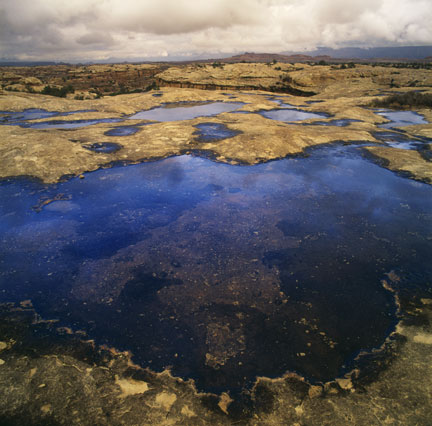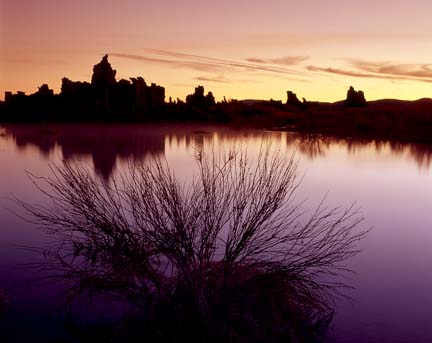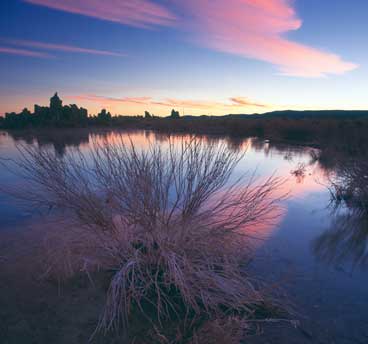Cokin Blue / Yellow Polarizer
NB: If you click on the photographs below to view larger versions, please then use your browser’s BACK button to return to this page.
Punch It Up
I rarely use any filters other than a polarizer or a graduated neutral density. But, in 1999 my friend and western landscape photographerSteve Kossackintroduced me to theCokinBlue / Yellow polarizer (#173)and it’s now become an indispensable part of my kit.
The photograph above was taken just before dawn atMono Lake, CA. While it’s effective, the sky wasn’t as dramatic as I would have wished. Steve handed me his Cokin B/Y to try and a few minutes later, along with the use of a wider-angle lens, the photograph below was the result.
Whether you like the image or not is a matter of taste, but one can’t disagree that this photograph is punchier and more dramatic. Steve’s comment was that whenever he sees water, he thinks of the B/Y filter, and I now do to.
How It Works
This filter is a polarizer, but with a difference. Depending on the angle of polarization either the blue or the yellow portion of the spectrum is accentuated, so as you rotate the filter the degree of saturation of these two colours changes. There’s no way to really know what the filter’s going to do other than to look through it. Even then, depending on the lens used, the light, the film and what one is shooting, the effect can range from downright ugly to quite beautiful.
 Blue Pool Reflection, Arches N.P.‚ 2000
Blue Pool Reflection, Arches N.P.‚ 2000
This photograph, taken in theNeedlesdistrict ofCanyonlands National Parkshows that if used with the right subject matter the effect can be subtle, yet effective. The reflection of the sky in the water was removed by the polarization and the intriguing shape beneath it was revealed. Both the intense blue colour of the water and the warm colour of the rock were accentuated, but the overall effect isn’t too "loud" because the white clouds in the sky provide a neutral counterpoint.
A Mounting Trick
This filter is part of Cokin’s "P" series and mounts to your lens using one of a series of adapter rings and mounting holders. If you use the Cokin P system for your other filter needs then you’ll find this filter’s use straightforward. If you don’t, and this is the only Cokin filter that you use, then there’s a simpler way of doing this.
Take anXactoknife and slit open the filter holder by cutting the edge opening. Remove the filter, which you’ll discover is round, though the holder itself is square. Take a 77mm Cokin adapter ring and you will find that the naked filterexactlyfits inside it. UsingKrazy glueor epoxy cement secure the filter to the inside of the ring.
You now have a stand-alone 77mm filter that will fit any lens with that size filter ring and which can be used on smaller lenses with a step-down ring. It also is still usable as a regular Cokin ring if you wish to use other filters simultaneously.
Larger lenses are unfortunately out of luck until Cokin brings out this filter in theirXseries size.
There now appears to be a high-quality alternative to the Cokin B/Y polarizer fromSingh-Ray. It’s called theSingh-Ray Gold-N-BlueÂand comes in a number of different sizes. I have no personal experience with this filter, but my colleagueSteve Kossackhas been using one for a while and is extremely pleased with it.Hereis a photograph taken by Steve that utilizes theGold-N-Blue.
Singh-Ray have a quality reputation and therefore these are bound to be excellent. Unfortunately they don’t yet make this filter in 100mm square size, so I’m unable to use it with myLeefilter system.
You May Also Enjoy...
Lightpainting with a Harmonograph Harmony of Light – From Technology to Art? By Andrew Carter
FacebookTweet Introduction I am a lifetime enthusiast photographer, but my career has been in Optoelectronics and Engineering, designing and building the devices that power today’s



